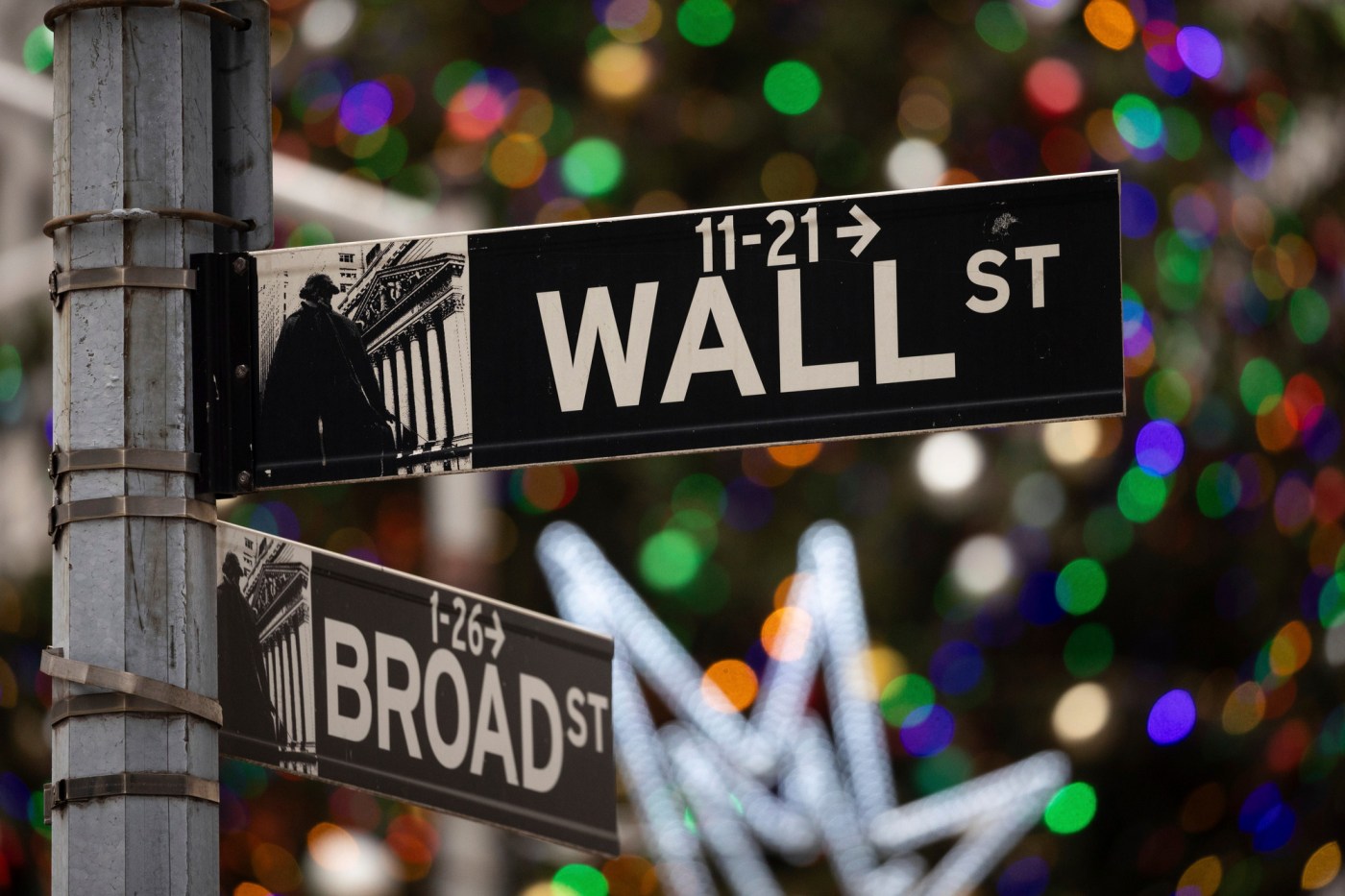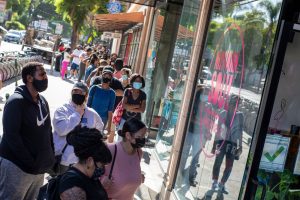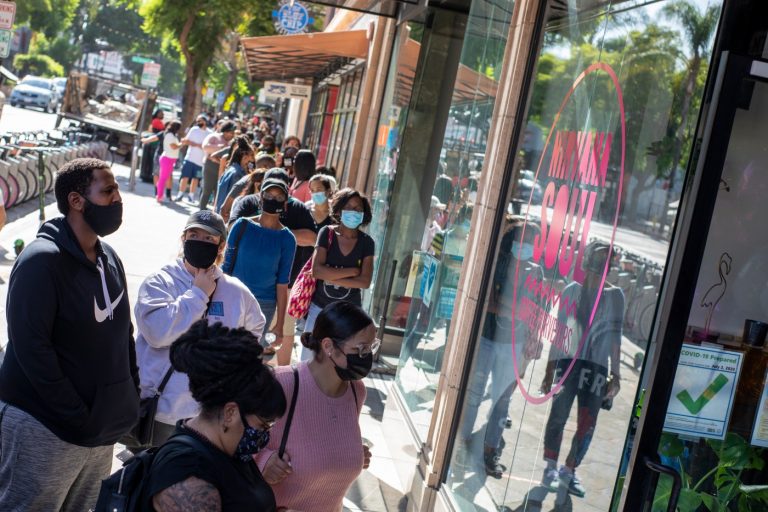New York — The Dow broke past the 40,000 threshold Thursday morning for the first time ever, fueled by an encouraging inflation report.
The blue-chip index was up about 114 points, or 0.3%, and trading around 40,022 mid-morning.
Markets had rallied to new record highs Wednesday after the latest Consumer Price Index showed a cooldown for the first time in months, stoking hopes that the Federal Reserve could start cutting interest rates as soon as September.
On a monthly basis, the inflation report showed that prices rose 0.3%, a slower pace than in the two months prior, according to the Bureau of Labor Statistics. Economists were expecting a 0.4% monthly increase, according to FactSet consensus estimates.
Another key data point added to the enthusiasm: April retail sales came in significantly weaker than expected, indicating that consumers are pulling back on the spending that drives the economy. Spending missed the 0.4% increase that economists had projected.
“This is the first good CPI report in four months and the market likes it,” said Gary Pzegeo, head of fixed income at CIBC Private Wealth US. “Taken [together with retail sales] this supports a Fed rate cut in the fall. Markets are discounting a cut in September and have moved to price in a second cut by December.”
Main Street vs. Wall Street
The new record for the Dow, made of 30 blue-chip stocks, marks a symbolic shift for investors who — despite elevated interest and inflation rates, geopolitical strife and years of recession warnings — still feel good about the US economy.
It also highlights a notable contrast between sentiment on Wall Street and Main Street.
Consumer sentiment plunged to the lowest level in six months as price increases reaccelerated, according to a University of Michigan survey of consumers released earlier this month.
The recent inflation crisis has given Americans angst about the economy, and recent CNN polls show that many people believe the US economy is headed in the wrong direction. Some even believe the United States is currently in a recession, although there’s no evidence of that.
Overall, 26% of Americans currently say that economic conditions have stabilized, according to CNN data from February. Nearly half of Americans say they believe the economy remains in a downturn.
The first three months of 2024 brought remarkable market momentum. The S&P 500 hit 22 new records between January 1 and April. But, since then, markets have become volatile, as investors began to fear that inflation and interest rates would remain higher for longer.
Wednesday’s CPI report changed that perception.
“This was a good report in the context of three hotter-than-expected [CPI] reports, and it makes it look like potentially those were bumps in the road rather than a really stagnant inflation environment,” Tyler Schipper, economics professor at the University of St. Thomas in Minnesota, told CNN in an interview.
Crossing 40,000
Related Articles
Krugman: Preparing for the dangers of a second China shock
General Motors opens Mountain View office that will be a big tech hub
Californians are not paying their bills at the highest level since 2021
Bay Area consumer prices hop higher as pace of inflation worsens
Tech job cuts ease a bit in Bay Area as industry layoffs haunt region
Crossing the 40,000 level doesn’t hold much practical value for investors, but it does catch the attention of the public and, some argue, it could help propel that optimistic sentiment beyond Wall Street.
“The Dow 40,000 milestone also shows how resilient the US economy has been, at a time where there was a plethora of calls for a recession,” said Art Hogan, chief market strategist at B. Riley Financial, in a recent note to CNN.
“The overarching importance of crossing these big round numbers is that it brings Wall Street news to Main Street, at least for a day. It also serves as an affirmation that corporate earnings are growing, and that investor confidence remains robust,” he said.
To many Americans, “the Dow” simply means the stock market. The index’s small cache of stocks — ranging from Microsoft to McDonald’s to Chevron — represents some of the largest companies in the nation and are widely held among retail and institutional investors alike.
A look back
Here are some important stops along the Dow’s road to 40,000:
Dow is formed: The first daily close, on May 26, 1896, was 40.94. The Dow did not get off to a good start, plunging 30% to an all-time low of 28.48 by August that year.
Dow 100: The Dow first closed in triple digits in January 1906. That marked an impressive rally for the average, which had hit an all-time low when Teddy Roosevelt was president. The Federal Reserve would not be created for seven more years.
Crash of 1929: The Dow fell 38 points on Oct. 28 and 31 more points the next day. That might not sound bad today, but it represented back-to-back declines of 13% and 12% of the Dow’s value. They are still two of the worst one-day percentage declines in the index’s history.
Dow 1,000: Nov. 14, 1972. Richard Nixon had just won reelection by taking 49 states. The Dow’s components, which had been unchanged for 13 years, included Woolworth, Eastman Kodak and International Nickel.
Crash of 1987: On Oct. 19, the Dow plunged 508 points, a 23% drop that is still the largest one-day percentage decline in history. A week later it took an 8% plunge. But the damage was short-lived: Within a year, the Dow was back to pre-crash levels.
Dow 10,000: March 29, 1999. The “irrational exuberance” of the tech bubble was in full swing as the Dow gained 1,000 points in less than a year to hit this benchmark. It gained 1,000 more points in just the next month.
A year later, the dot-com stock bubble burst, sending the Dow down nearly 30% by September 2001.
Meltdown of 2008-2009: The financial crisis caused the Dow to lose about half its value in less than a year, bottoming out to close at 6,547 on March 9, 2009. The worst day was Sept. 29, 2008, when the Dow lost what was then a record 778 points after Congress rejected a $700 billion bank bailout. The bailout was later approved.
Dow 15,000: May 7, 2013. As the economy continued to recover from the Great Recession, the Dow had one of the current bull market’s strongest periods. It crossed the 15,000 mark and finished the year up 26.5%, marking the best full-year performance of the current bull market. The Dow nearly matched that in 2017, rising 25%.
Dow 20,000: January 25, 2017. The stock market had enjoyed a nice run starting on the day after the 2016 election, with the Dow gaining nearly 10% as investors looked forward to lower taxes and less regulation under the Trump administration.
Dow 25,000: Jan. 4, 2018. The passage of the Trump tax cuts, especially the lowering of the corporate tax rate in December 2017, helped feed the quick move between 20,000 and 25,000.
Dow 30,000: Nov. 24, 2020: Covid sent the stock market plunging in the spring of 2020. But new hopes of a vaccine and the results of the presidential election ended an era of uncertainty on Wall Street, sending the stock market rolling once again.
The-CNN-Wire
& © 2024 Cable News Network, Inc., a Warner Bros. Discovery Company. All rights reserved.












